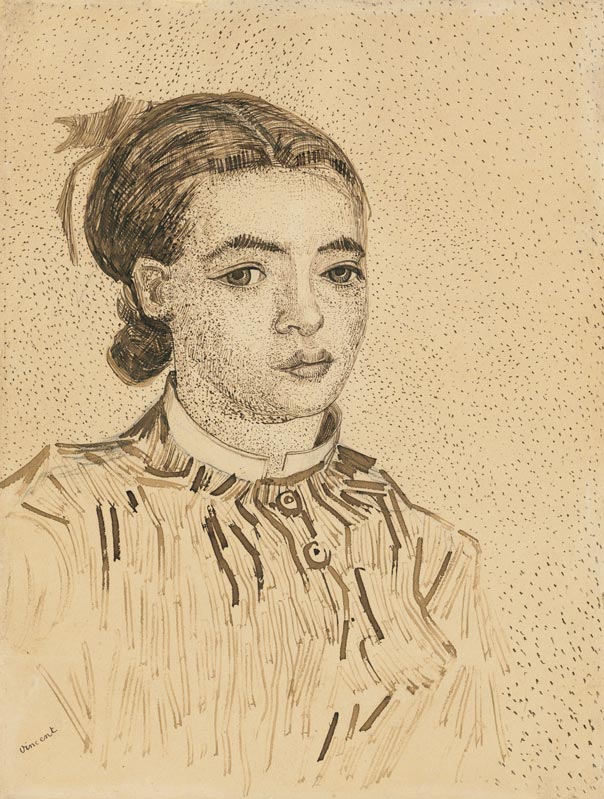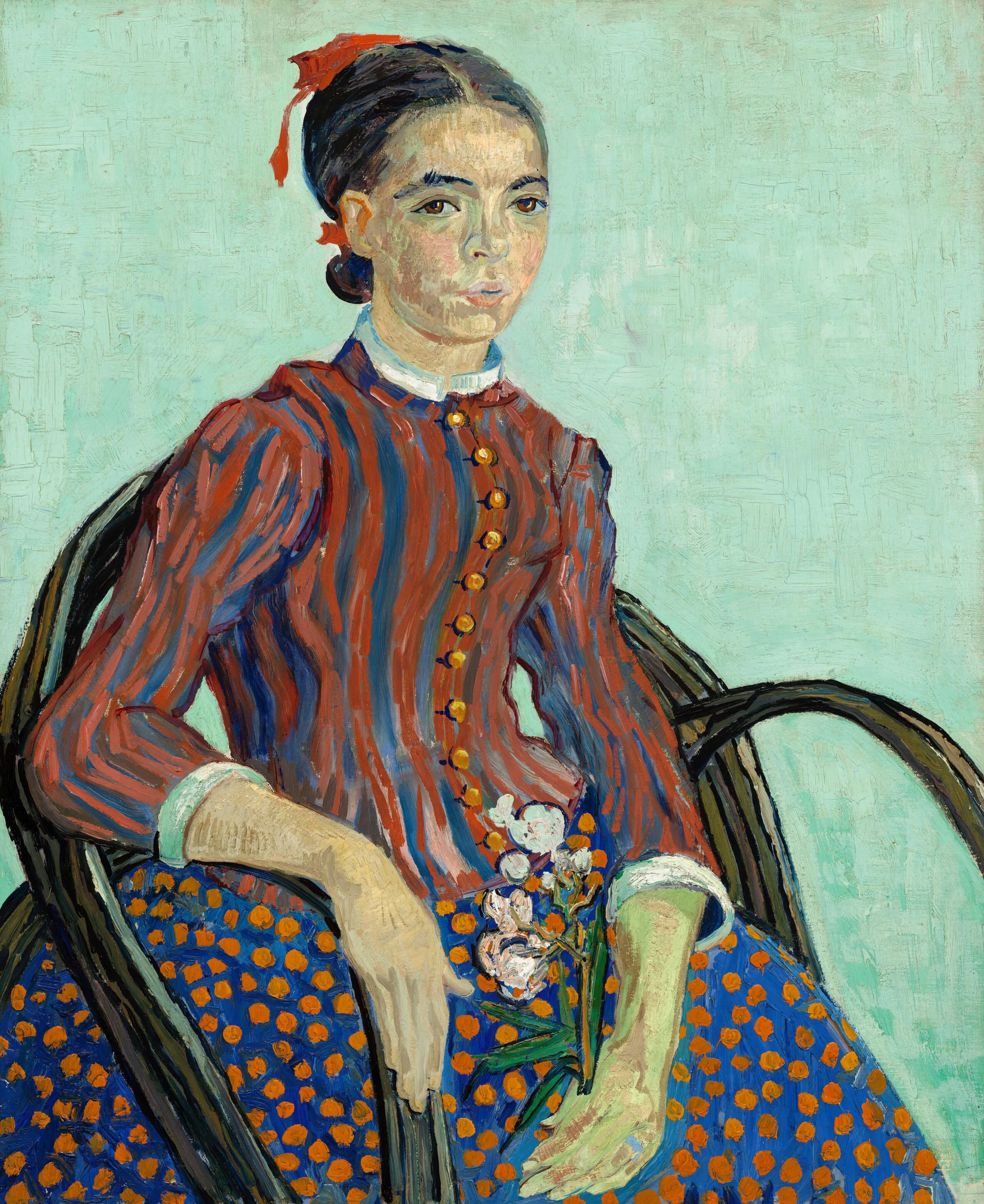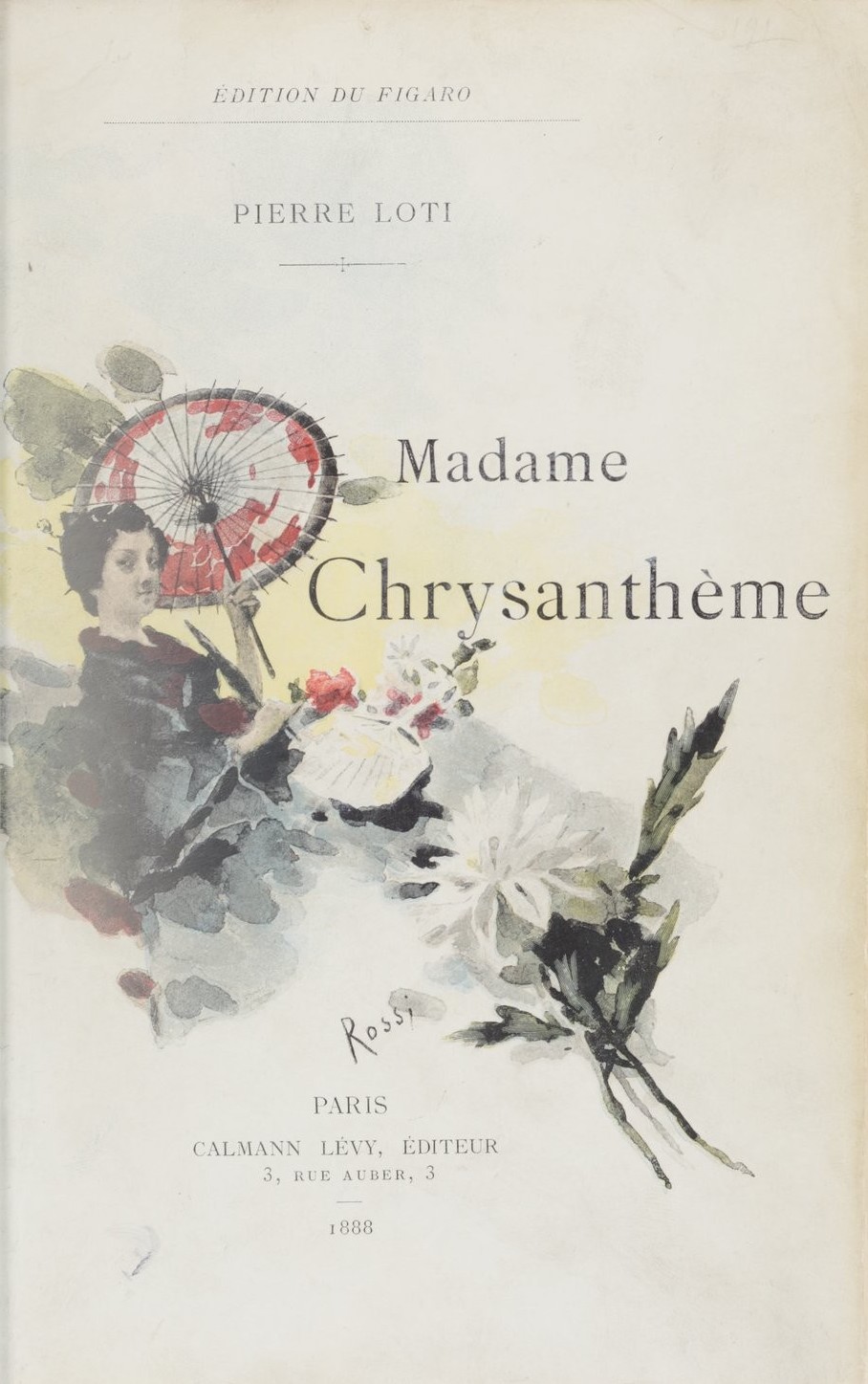Van Gogh’s Drawing of a Young Japanese Girl
In 1888, the artist depicted 'La Mousmé', a character inspired by the novel 'Madame Chrysanthème' by Pierre Loti.

Vincent van Gogh, “La Mousmé”. © Christie's
‘Mousmé is a word meaning a young girl or a very young woman. It is one of the prettiest words in the Japanese language; it seems to reflect both moue (meaning a young girl’s funny and pretty pout) and frimousse (meaning a young girl’s pert and sweet little face).’ These lines from Madame Chrysanthème, a novel by Pierre Loti that was published in 1887 and that tells the story of the marriage of a young French naval officer to a Japanese woman in Nagasaki, provided the inspiration for the painting La Mousmé. Produced in 1888 by Vincent Van Gogh, it is now held by the National Gallery of Art in Washington DC.
In 2021, this young girl became topical once again when the auction house Christie’s put a drawing done by the artist in 1888 up for sale, an image inspired by the already famous painting he had completed just months previously. This piece forms part of a series of drawings done using a reed pen and working from his own paintings, and became the artist’s most expensive drawing ever sold.
A mousmé from Provence
Highly receptive to the aesthetics and codes of Japonisme, Van Gogh collected engravings by Hokusai, Hiroshige, Utamaro, and Sharaku. 1888, the year he settled in Provence, also marked a major step in the evolution of his work. Van Gogh found the environment to be reminiscent of Japanese landscapes—despite having never visited the country—particularly its sunny colours. The drawing of La Mousmé, exhibited at the Metropolitan Museum of Art in New York, the Royal Academy in London, and Tate Britain in 2019, is distinctive due to the technique used. This may be because it is not a preparatory study for the painting of the same name, as the drawing was produced with a dense collection of lines and dots.
The drawing of La Mousmé, which was sold online by Christie’s for over 10 million dollars, was restituted in 1956 after having been stolen from a Jewish banker during the Nazi occupation of the Netherlands.
La Mousmé (1888), a painting by Vincent Van Gogh, is held at the National Gallery of Art in Washington DC, USA.

Vincent Van Gogh, 'La Mousmé', 1888 - © Chester Dale Collection, National Gallery of Art

'Madame Chrysanthème' par Pierre Loti, première édition
TRENDING
-
The Tattoos that Marked the Criminals of the Edo Period
Traditional tattoos were strong signifiers; murderers had head tattoos, while theft might result in an arm tattoo.

-
Paris, Tokyo: Robert Compagnon
With his co-chef and talented wife, Jessica Yang, Robert Compagnon opened one of the top new restaurants in Paris: Le Rigmarole.
 3:31
3:31 -
Chiharu Shiota, Red Threads of the Soul
Last year, more than 660,000 people visited the retrospective 'Chiharu Shiota: The Soul Trembles' exhibit at the Mori Art Museum.

-
‘Before Doubting Others, Doubt Yourself. Who Can Truly Say a Dish Isn’t What It Used to Be?’
In ‘A Non-Conformist’s Guide to Surviving Society’, author Satoshi Ogawa shares his strategies for navigating everyday life.

-
The Story of Sada Yacco, the Geisha who Bewitched Europe
Described by Dazed magazine as the first beauty influencer, she has been restored to her former glory since 2019.





